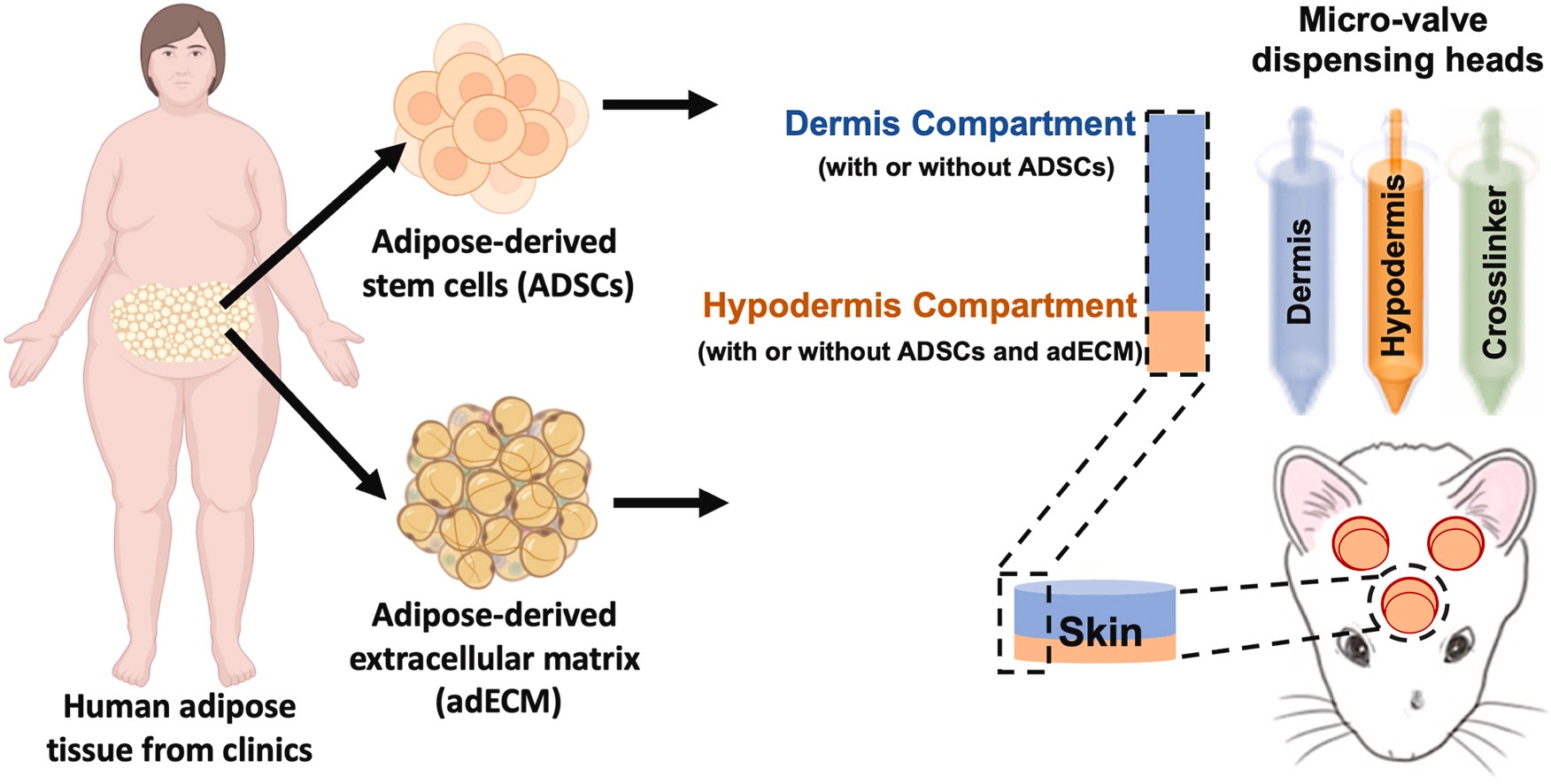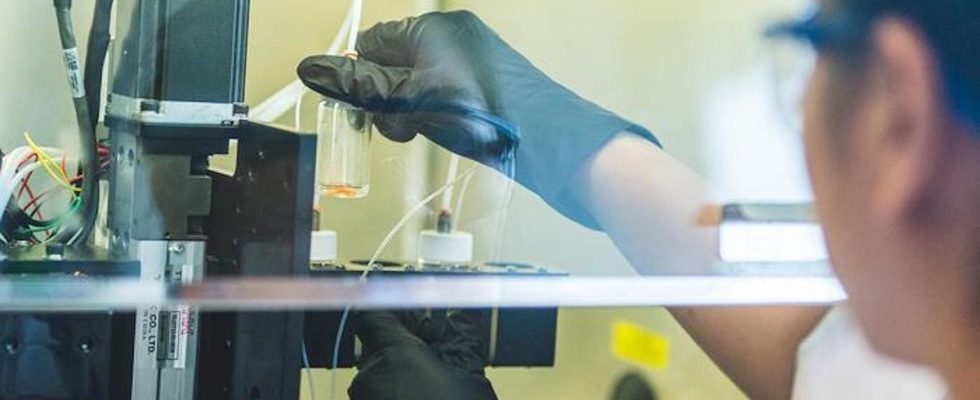Published on
Updated
Reading 3 min.
To repair the damaged skin of the sick or injured, researchers have developed a revolutionary new 3D printing process to repair serious injuries. The prospects linked to this world first could revolutionize reconstructive surgery.
To improve the appearance of scars after reconstructive surgery, researchers have created 3D printed skin that can repair injured areas. These new type of grafts could revolutionize reconstructive surgery. The American team is the first to have succeeded in printing the different layers of the skin during the operation, including the deepest hypodermis.
Reprint damaged skin
Adipose tissue may be the key to 3D printing layers of living skin and potentially hair follicles, according to these researchers who recently harnessed fat cells and support structures from clinically obtained human tissue to precisely correct injuries in rats.

“Reconstructive surgery – to correct trauma to the face from injury or disease – is usually imperfect, resulting in scarring or permanent hair loss“, explained Professor Ibrahim T. Ozbolat, professor of engineering and mechanics at Penn State, who led the research. However, “With this work, we demonstrate full-thickness bioprinted skin with the potential to grow hair in rats. This is one more step towards the possibility of obtaining a more natural and aesthetic reconstruction of the head and face in men,” he says.
To carry out this work, scientists 3D bioprinted thin layers of skin, including the bottommost layer – called the hypodermis. The printing of the tissue is done during surgery, meaning the approach can be used to repair damaged skin more immediately. The top layer – the epidermis which serves as the visible skin – forms on its own with the support of the middle layer, so it does not require printing.
A recipe with three key ingredients
To do this, they extracted human adipose tissue from patients hospitalized at the Penn State Health Milton S. Hershey Medical Center. The researchers also worked on stem cells that have the ability to develop into several different cell types – providing another component needed for printing. Each component was then placed in one of the three compartments of the bioprinter. The third compartment was filled with a coagulant solution which helps the other components bind properly to the injured site.
“The three compartments allow us to co-print the matrix-fibrinogen mixture with the stem cells in a precise manner“, assures the professor. “We printed this skin directly onto the injury site with the goal of forming the hypodermis, which aids in wound healing, hair follicle generation, temperature regulation, and much more..”
Result ? The 3D artificial skin reached the layers of the hypodermis and dermis… in just two weeks. The epidermis forms on its own in two weeks.
Important detail: for everything to work correctly, the matrix and the stem cells must be administered at the same time.
Hair follicles whose development remains to be tamed
Scientists also discovered that the hypodermis contained “growths” – in other words early hair follicles. According to the researchers, if adipose cells do not contribute directly to the cellular structure of hair follicles, they participate in their regulation and maintenance. A promising avenue for injured or sick people, who wish to regain a certain hair density or natural hair on the grafted areas.
We work on this “to mature hair follicles with controlled density, directionality and growth“, explains Professor Ibrahim T. Ozbolat.
If scientists can perfect this technique – and precisely grow hair on traumatized areas of skin – it could “limit the visible nature of natural reconstructive surgery“. The researcher believes that these results constitute a “promising direction”, particularly in association with other projects in his laboratory involving the printing of bones and skin in different shades and pigmentation.
